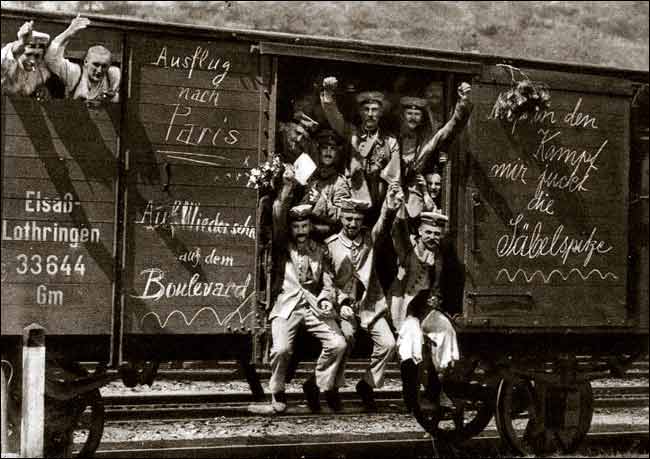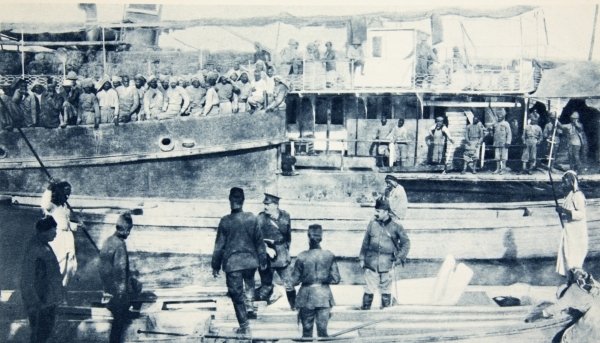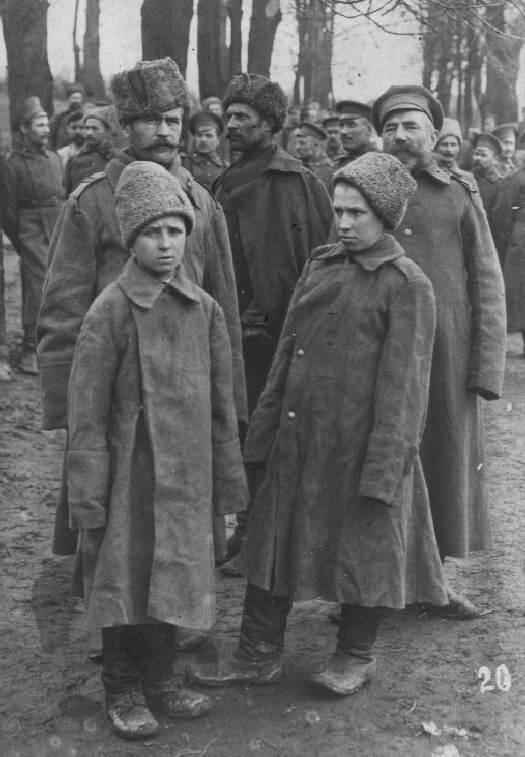
THE LOST GENERATION OF 1914 - THE BITTER OUTCOME OF THE FIRST WORLD WAR
Hundreds of thousands of young men who participated in the First World War lost their lives either on the battlefield or in prisoner camps; those who survived lived out their lives as walking dead due to the trauma they endured.

Prisoner-of-war memories have always fascinated me. Even if the stories are painful, they are realistic and full of lessons. Perhaps this is because of my grandfather, who left his 40-day-old baby and went to the front, only to be captured on the Caucasus front and live as a prisoner for seven years in Siberia. He didn’t write down his memories, but his stories remain vivid. The generation before us barely had the chance to meet their grandfathers. Across the world, this lost generation of 1914, which went to war joyfully, perished either on the front lines or in prisoner camps. Those who survived were left as living dead due to the traumas they faced.
Ottoman Prisoners Stand Out
During World War I, the Ottoman army fought on the fronts of the Caucasus, Gallipoli, Iraq, Egypt, Galicia, Yemen, Iran, Libya, and Syria. Fighting across a vast region and under harsh natural conditions, the army faced shortages in manpower, equipment, and supplies. Consequently, the losses were significant. Approximately 2.6 million men were conscripted. Roughly estimated, 325,000 soldiers died on the battlefield, from wounds, or diseases; 400,000 were wounded; and 1,560,000 were prisoners, deserters, or missing, bringing total losses to 2,285,000.
The number of Turkish captives was around 202,000. The highest number of prisoners—75,000—was captured on the Palestine front under Mustafa Kemal Pasha's command, followed by 55,000 on the Eastern front under Enver Pasha’s command.
The total loss in Syria and Palestine over four years amounted to approximately 138,367: 15,364 martyrs, 34,199 wounded, 10,069 missing, and 78,735 prisoners. Most of these losses occurred following the Battle of Megiddo, the last major battle of the front: 10,000 martyrs, 20,000 wounded, and 71,300 prisoners (Edward J. Erickson, Ordered to Die: A History of the Ottoman Army in the First World War, Westport, Connecticut: Greenwood Press, 2001, p. 216).
Ottoman soldiers fell captive to the British (135,000), Russians (65,000), French (2,000), Romanians (600), and Italians (100). They spent years in prisoner camps. Those who survived returned to their homelands filled with longing, suffering, and illness. The global human cost of the war exceeded 8 million lives. France, Germany, and Austria lost 10% of their active male population; Britain, Russia, Türkiye, and Italy lost 5%. In total, 63 million men were mobilized.

The Red Cross and Red Crescent worked together to inspect camps and prepare reports, striving to improve conditions. Thanks to these efforts, soldiers had the opportunity to voice complaints, many of which were addressed. Treatment was reciprocal; Ottoman prisoners were treated in the same way the Ottoman government treated its captives. Camp administrators and Red Cross reports agreed that Ottoman prisoners were disciplined, clean, dignified, and resilient.
The British established camps in India, Burma, Egypt, Greece, Basra, Baghdad, Cyprus, Malta, and the Isle of Man; the French in Corsica and southern France; and the Russians from the Caspian to Siberia. Among Ottoman prisoners were Greek, Armenian, and Jewish soldiers. Separate camps were also established for Ottoman civilians and prisoners’ families in Allied territories. The transportation of Ottoman soldiers captured in Iraq to India heightened anti-British sentiments among Indian Muslims.

Transport in Freight Wagons
Transport to camps was primarily by ship. Soldiers unaccustomed to sea travel often suffered from seasickness and arrived at the camps ill. Prisoners sent to Russian and Romanian camps were transported in freight wagons with boarded-up windows and doors, two-tier wooden benches, and a bucket in the corner for sanitation. Nearly half perished en route. However, transportation for Russian and Romanian soldiers to the front was not much different.
Some local civilians assisted the prisoners. In Cyprus, for instance, a Cypriot imam was arrested for helping them. Due to difficulties, comfort, or instability in their homeland, escape attempts were few. However, local Muslims, such as fishermen in Cyprus, helped fugitives. My grandfather spoke of the unparalleled aid he received from a Tatar teacher while escaping from a camp. Upon their return, some prisoners faced further challenges: some found their families or homes gone; others discovered their wives had remarried, believing them dead; and some were arrested as deserters.

Following the Armistice of Mudros (1918), prisoners began returning by sea. However, fearing that the Ankara movement might utilize them, the Allies delayed the repatriation of some prisoners. Ankara, suspecting British concerns that Ottoman prisoners in Russia might incite rebellion in India, made little effort to bring them back. The last prisoners returned in 1922. What remained were cemeteries marking the fallen. Some prisoners married and assimilated into local communities. After the Greeks were defeated, Russian-held prisoners began returning. Due to the Russian Civil War, their journey took months on chartered Japanese ships. One ship fell into Greek hands in the Aegean, and about 1,000 soldiers were held in an Italian camp for another 8.5 months.
Because the tradition of memoir writing was not strong in our culture, prisoner-of-war accounts are scarce. Some preferred not to recall those painful days, while others did not live long enough due to the hardships and illnesses they endured.

Önceki Yazılar
-
IF SULTAN MEHMED II HE HAD CONQUERED ROME…17.12.2025
-
VIENNA NEVER FORGOT THE TURKS10.12.2025
-
THE FIRST UNIVERSITY IN THE WORLD WAS FOUNDED BY MUSLIMS3.12.2025
-
WHO BETRAYED PROPHET ISA (JESUS)?26.11.2025
-
IT HAS BEEN MORE THAN 100 YEARS SINCE ITS ABOLITION, BUT... IS THE CALIPHATE BEING REESTABLISHED?19.11.2025
-
GREETINGS TO YOU, O OTTOMAN SANJAK!…12.11.2025
-
ROTHSCHILDS BROUGHT THE END OF THE OTTOMAN EMPIRE!5.11.2025
-
SHEIKH BEDREDDIN, SON OF THE QADI OF SIMAVNA29.10.2025
-
THE ROOTS OF THE ENGLISH POLITICIAN IN TURKEY – THE TRAGIC END OF ALI KEMAL BEY22.10.2025
-
WHERE IS THE RED APPLE?15.10.2025